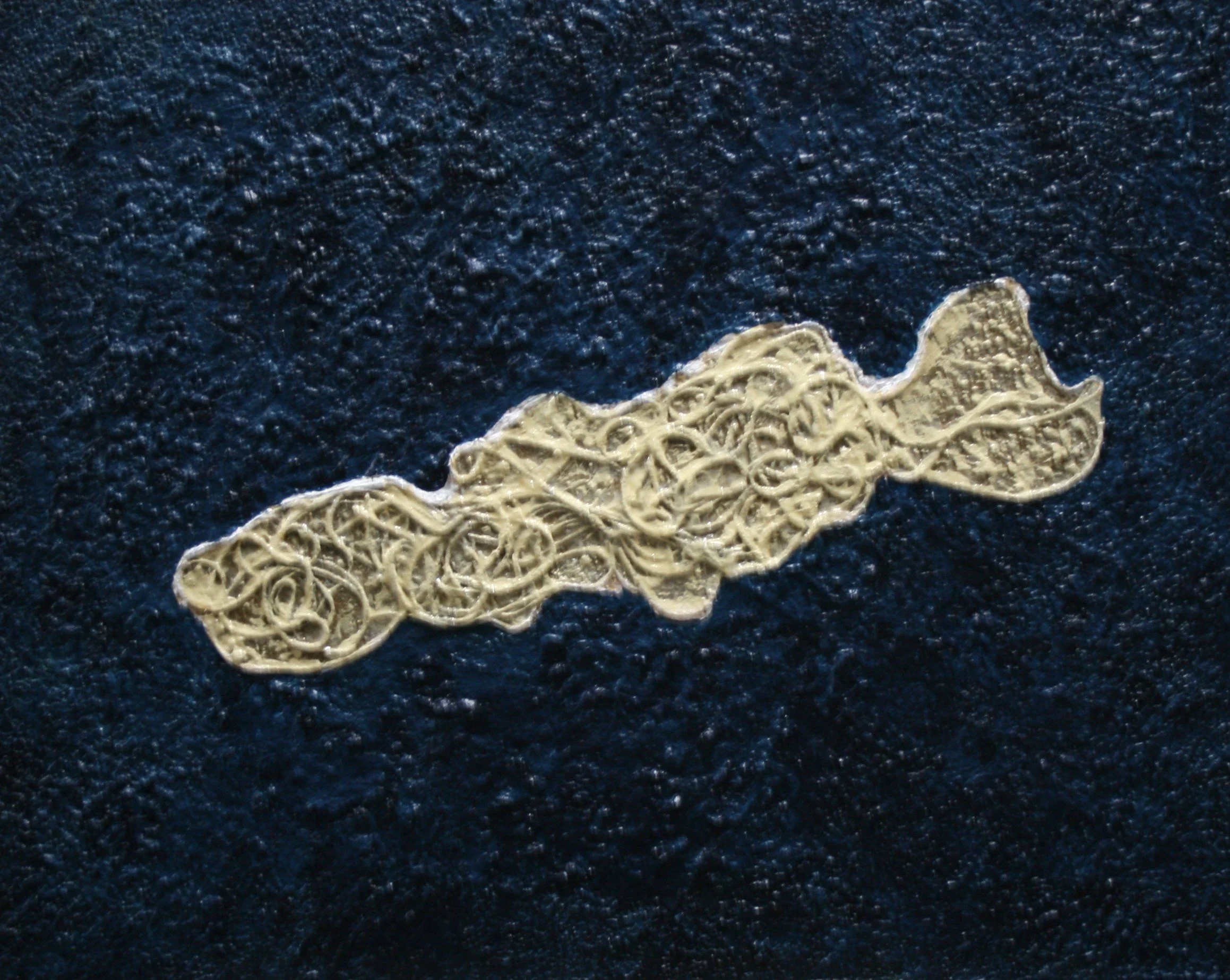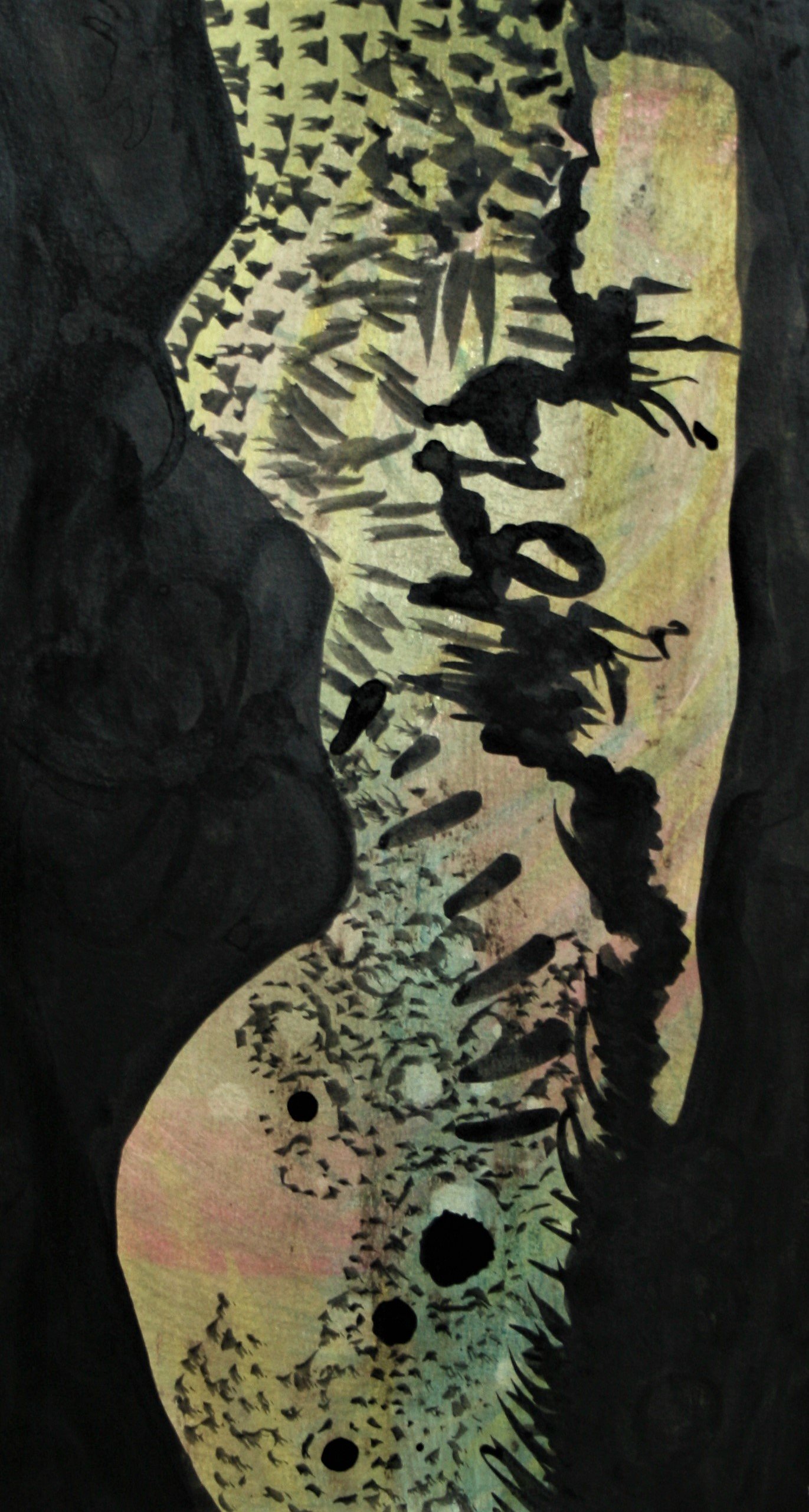Judith Dupree Beale
Judith currently resides in the United States. She works as a multidisciplinary artist participating in regional, national and international exhibits and competitions. She completed her BFA degree in 1972 majoring in Art and Art History at the Little Rock UALR campus. During the late 1970’s to the mid 90’s she worked as an independent commercial illustrator and in various roles within her family’s business operations. In 1995 she received an MFA degree with Honors in Studio Arts (concentration painting) from the University of Memphis, Memphis, Tennessee. Her works are held in collections of private individuals, universities and corporations in the United States and in Europe. Much of her work comes from an “art for art’s sake” abstract expressionist perspective combined with what might be termed a mark makers sense of spirituality.
Judith, your studio process begins with what could be described as a quiet, almost meditative ritual: clearing the space, removing past works, and initiating the day with music, an act that borders on the ceremonial. In the context of your abstract expressionist lineage and your emphasis on intuitive mark-making, do you consider this preparatory process as an essential extension of the artwork itself, perhaps even as a kind of conceptual prelude to creation? How do these rituals shape the cognitive or spiritual conditions necessary for you to access the gestural language that defines your work?
I do think my studio process can be seen as a meditative method used to reach what I call a quiet state of mind that is free flowing and Zen-like. There are times when my work seems to just appear as though someone else has been holding the brush or tool. I consider those creative experiences to be gifts not to be questioned.
Throughout your career, your work has been described as existing at the intersection of abstraction, spirituality, and materiality, three elements often in tension if not outright contradiction within contemporary art discourse. How do you reconcile the formal demands of abstract painting with the more ineffable qualities of intuition and spirituality? In an age increasingly governed by conceptualism and digital aesthetics, what does it mean to pursue an embodied, almost primal form of expression that resists overt narrative or ideological framing?
The blending of control and spontaneity in a work combined with highly emotive design can be used to make the reconciliation of formal demands of abstract painting with intuition and spirituality. I am primarily concerned with probing self-truths rather than developing narratives and I greatly value discovery over ideology.
Your emphasis on mark-making as opposed to, say, composition, form, or subject suggests a radical re-centering of artistic intentionality. To what extent do you view the act of making a mark not just as a formal gesture but as an existential or even metaphysical event, one that inscribes presence, memory, and emotional resonance onto the surface? And how do you distinguish between a gesture that merely occupies space and one that speaks through it?
I believe marks are discourse from unknowable memory banks. They are received in context as to how well all the formal elements are arranged. If they stand out then usually there is a problem to correct.
The surfaces in works such as Eye of the Storm and Cosmic II verge on the sculptural, suggesting a material language that is as much about texture, weight, and tactility as it is about color or composition. Given your fluid movement between two-dimensional and three-dimensional modalities, do you see your work as a challenge to traditional art historical hierarchies between painting and sculpture? How do you conceptualize the role of physicality, of the body, of touch, of resistance, in an era increasingly dominated by immaterial digital processes?
Humans need connection through touch, sight, smell, and vision to emotionally respond fully. I am for more tactility, not less. I like seeing the lines between painting and sculpture blurred intentionally. To me, digital art is interesting and intriguing but not compelling or soul friendly. Do you find yourself wanting to touch a digital piece?
Having transitioned from a successful career in independent illustration and family business roles into a decades-long engagement with fine art, how has your understanding of visual language and indeed of the function of art itself transformed over time? Does your earlier commercial work inform your current practice in ways that are perhaps more subterranean or process-based rather than aesthetic? And how do you navigate the porous boundary between the utilitarian and the transcendent within your multidisciplinary approach?
Commercial design projects are time sensitive and pre-planned with concepts usually outlined in detail. I was liberated in the 1990’s when I went back to school for an MFA and experienced the freedom of working through a creative intent as opposed to producing a predetermined product.
The cosmological references in works like New Moon, Celestials No. 6533, and Primordial evoke a universe that is not merely symbolic or decorative, but emotionally resonant and psychologically charged. Would you say that your engagement with the celestial is rooted more in personal mythology, collective archetypes, or phenomenological experience? And in this context, how do you see abstraction functioning as a vessel for communicating the ineffable—those states of wonder, chaos, or origin that elude language?
My interest in the celestial developed over a lifetime of personal experiences that were unexplainable in concrete terms. Abstraction is the tool that allows me to search for answers. That may change, but I doubt it.
In many of your collage-based pieces, there is a visceral sense of accumulation and erasure, a pushing forward and peeling back of layers that seems to suggest both construction and excavation. Do you regard your process as primarily additive, or does it function more like a palimpsest, where the meaning of the work emerges through the revision, disruption, and partial concealment of earlier gestures? How conscious are you of the history embedded in the surface as you work, and does that history assert itself as a collaborator, a constraint, or something else entirely?
The process involved in my collage work tends to function more like a palimpsest in the working, reworking and deconstruction that seems necessary to reach the “aha” moment. I am totally aware of the search involved in resolving elements of a piece and look at the effort as collaborative.
Your artistic trajectory has spanned profound shifts in both cultural context and artistic methodology, from the analog world of the 1970s and 80s to today’s accelerated hyper-digital visual culture. How do you position your work within this changing landscape, particularly in relation to the saturation of images and the diminishing space for slow, materially grounded practices? Do you view your process as an act of resistance against visual oversaturation, or is it instead an attempt to reclaim sensory depth and contemplative space within a world that increasingly privileges speed and surface?
I consider my practice to be dedicated to a human need to create and express through evocative work. Work that I hope will invoke contemplative responses. I believe that type of experience will happen more often in a space designed for reflection and thoughtful inquiry.
You have often spoken about the enduring excitement that accompanies the beginning of a new work regardless of your years of experience. In a discipline where repetition and self-reference are common, how do you continually access that initial sense of wonder or openness? Is the blank canvas a source of liberation, anxiety, or something more complex, and how does your relationship to that emptiness evolve over time?
Continually seeking out and then working with new materials and processes keeps the excitement level high. Having a canvas ready to work on and at this stage in life, having plenty of energy to create the work, gets the creative juices flowing.
If the twentieth century was marked by the heroic gestures of the abstract expressionists and the philosophical inquiries of the conceptualists, what do you believe is the role or responsibility of the contemporary abstract artist in the twenty-first century? Given your deep engagement with intuition, gesture, and materiality, do you see abstraction as a form of philosophical inquiry, emotional catharsis, cultural commentary, or perhaps all of these simultaneously? And ultimately, how do you hope your work speaks to or challenges the viewer in an age where attention is fragmented and meaning is constantly negotiated?
The role of the abstract artist today, in my opinion, has already morphed into a tool of philosophical inquiry, emotional catharsis and cultural commentary and appropriately so. My hope is that much of my work can be viewed as thoughtful nudges toward inner reflection and the attainment of some quiet moments that might ease the stress of modern living.










